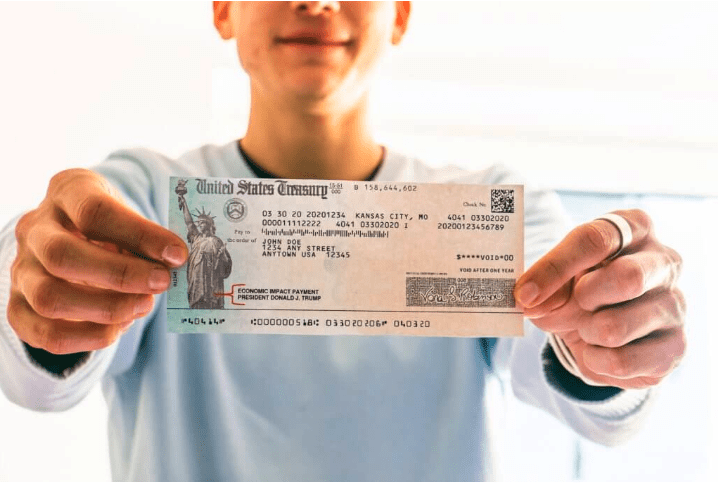If 2020 was a low-income year, pay attention!

The huge economic slowdown in 2020 has created planning situations unlike we’ve ever dealt with.
The stimulus payments from the CARES Act, paid out in the spring of 2020, were actually advance tax credits on your 2020 return. Obviously, in the spring of 2020, no one had filed their 2020 tax returns. The IRS calculated eligibility based on the latest AGI they had. At the time, that may have been the taxpayer’s 2018 AGI, or, if they’d already filed their 2019 tax returns, it would be based on that 2019 return.
If you received your stimulus payments from the CARES Act, you’re all set. Even if your 2020 income is too high to actually qualify for the tax credit, they will not be taking it back. It’s all yours.
BUT, if you didn’t get a CARES Act payment (because the AGI on your 2018 or 2019 return was too high) you can still get the stimulus payment if your 2020 income ended up falling into the qualifying range. You’ll simply file for the payment as part of your 2020 return. The due date is May 17. Careful – some states haven’t actually extended their state filing dates. Maine has done so – it’s May 17th as well.
The same tests applied to the $600 stimulus payments sent out to taxpayers in January of this year, under the Consolidated Appropriations Act. Like with the $1,200 CARES Act payment, if you didn’t receive it but were otherwise eligible, the $600 can be claimed on your 2020 return as well.
Direct stimulus payments contained in the recently enacted American Rescue Plan are similar to the prior two programs, in that they are limited based upon income and they are advanced credits on the current year (2021) income tax. There are a few significant differences, though. First, payments under this act are as high as $1,400 per eligible taxpayer. Like with the CARES Act payments, these are sent out based upon eligibility determined by the most recent tax return (either 2019, or 2020 if it’s already been filed).
The income eligibility for the 2021 Recovery Rebate is a bit more restrictive than the previous rebates. Eligibility for full rebates are still at the same income levels, but the phaseout for people above those levels happens much more sharply.
| Filing Status | Income Phaseout |
| Single Filers and Married Filing Separate | $75,000 – $80,000 |
| Head of Household | $112,500 – $120,000 |
| Married Filing Joint | $150,000 – $160,000 |
On the other hand, whereas parents could get stimulus payments based upon children under 16 with the prior rebate programs, the 2021 Recovery Rebate will apply to all dependents living with the taxpayer, regardless of age (even parents!).
The 2021 Recovery Rebate will also differ from the 2020 payments in another way: If a taxpayer was ineligible for the rebate based upon 2019 income, but otherwise eligible under their 2020 or 2021 income, they need not wait until they file their 2021 return to get the rebate! If their 2020 income was lower and put them into a situation where they qualified, but they hadn’t filed their 2020 return in time to get the initial round of 2021 stimulus payments, another ‘checkpoint’ will occur on the “Additional Payment Determination Date”.
This second checkpoint will provide an interim eligibility for people who had their income impacted in 2020 but who had not yet demonstrated this eligibility by filing their 2020 tax return. This Additional Payment Determination Date is set in the act as the earlier of: 90 days after the 2020 tax filing deadline, or September 1st 2021. (This was a major clue about the likelihood of a tax deadline extension for 2021, since September 1st is well past the 90 day mark after the original April 15th deadline.)
Example: Amber and Jon run a successful small business and they made $200,000 in AGI on their 2019 return. This exceeds the limits for the initial test on the 2021 Recovery Rebate. However, in 2020 their joint AGI went down to $100,000, because they had to shut down for a significant period. Once they file their 2020 return, they will be eligible under the second checkpoint, and will receive their stimulus payment after the Additional Payment Determination Date.
This creates an interesting potential pitfall with the 2021 Recovery Rebate, though. Someone who suffered a large income decrease in 2020 could conceivably lose out on the stimulus based upon WHEN they file their 2020 return!
Example: Amber and Jon are having issues with getting their 2020 taxes filed. They decide that they’ll take advantage of the automatic extension to file their 2020 return (still October 15th, like any other year). Since they didn’t qualify for the initial 2021 Recovery Rebate based upon their 2019 income, and the IRS didn’t have their lower income number on the Additional Payment Determination Date, they didn’t receive their rebate in 2021. They’ll need to wait until they file their 2021 return in 2022. HOWEVER, if their 2021 income has recovered to a point where they are no longer eligible (keeping in mind that the 2021 Recovery Rebate is an advance based upon 2021 income), they won’t get the rebate at all! Since they have two children, their rebate would have been $1,400 x 4 = $5,600. If they had filed their 2020 taxes before the Additional Payment Determination Date, they would receive that amount; the cost of extending their 2020 return ends up being $5,600. Ouch.
The moral of the story is: If your income is usually high enough not to qualify for this 2021 stimulus, but you had a significant reduction in 2020, filing a prompt 2020 return is crucial, especially if 2021 is a recovery year. And that’s our wish for everyone!!



